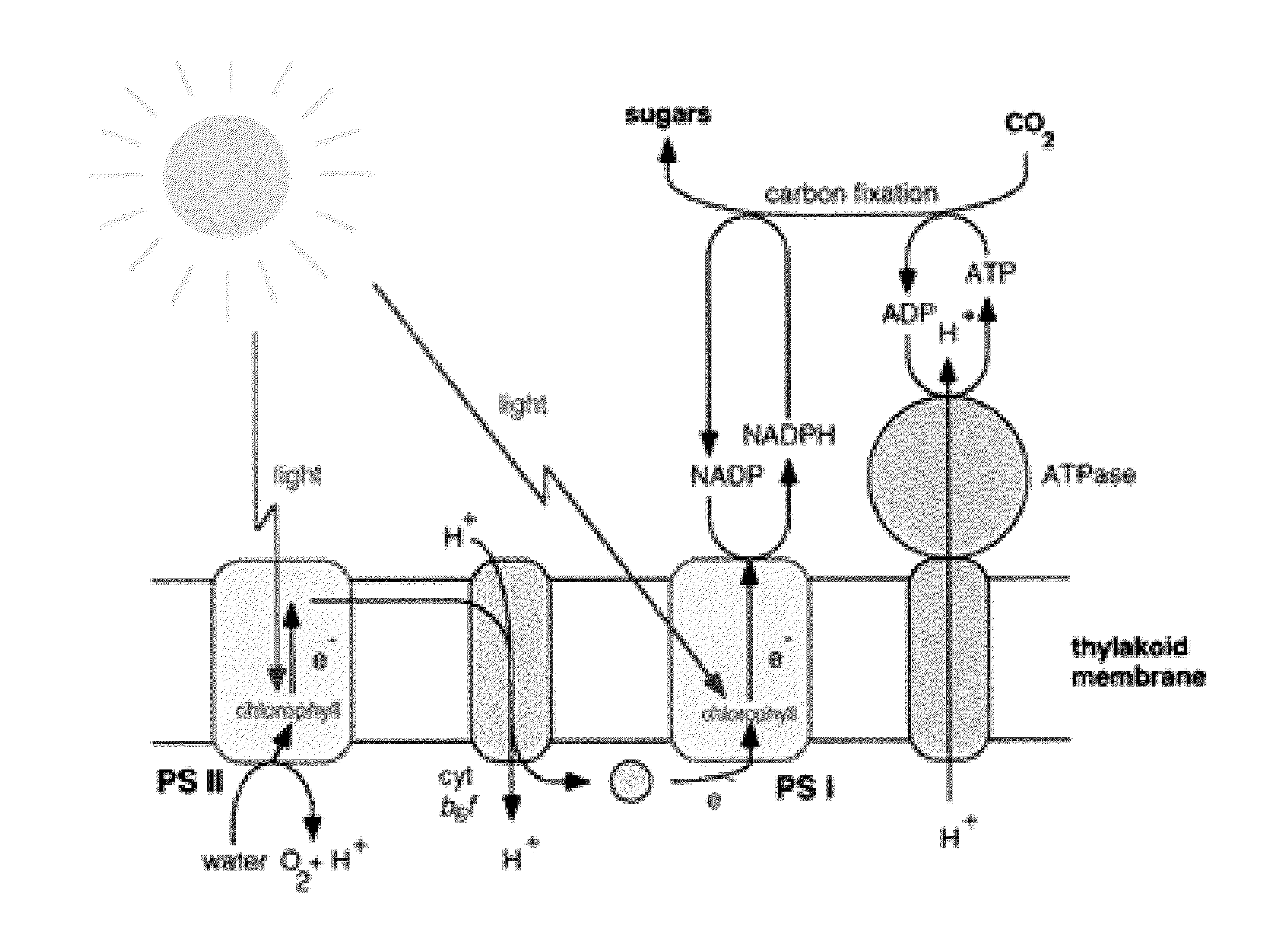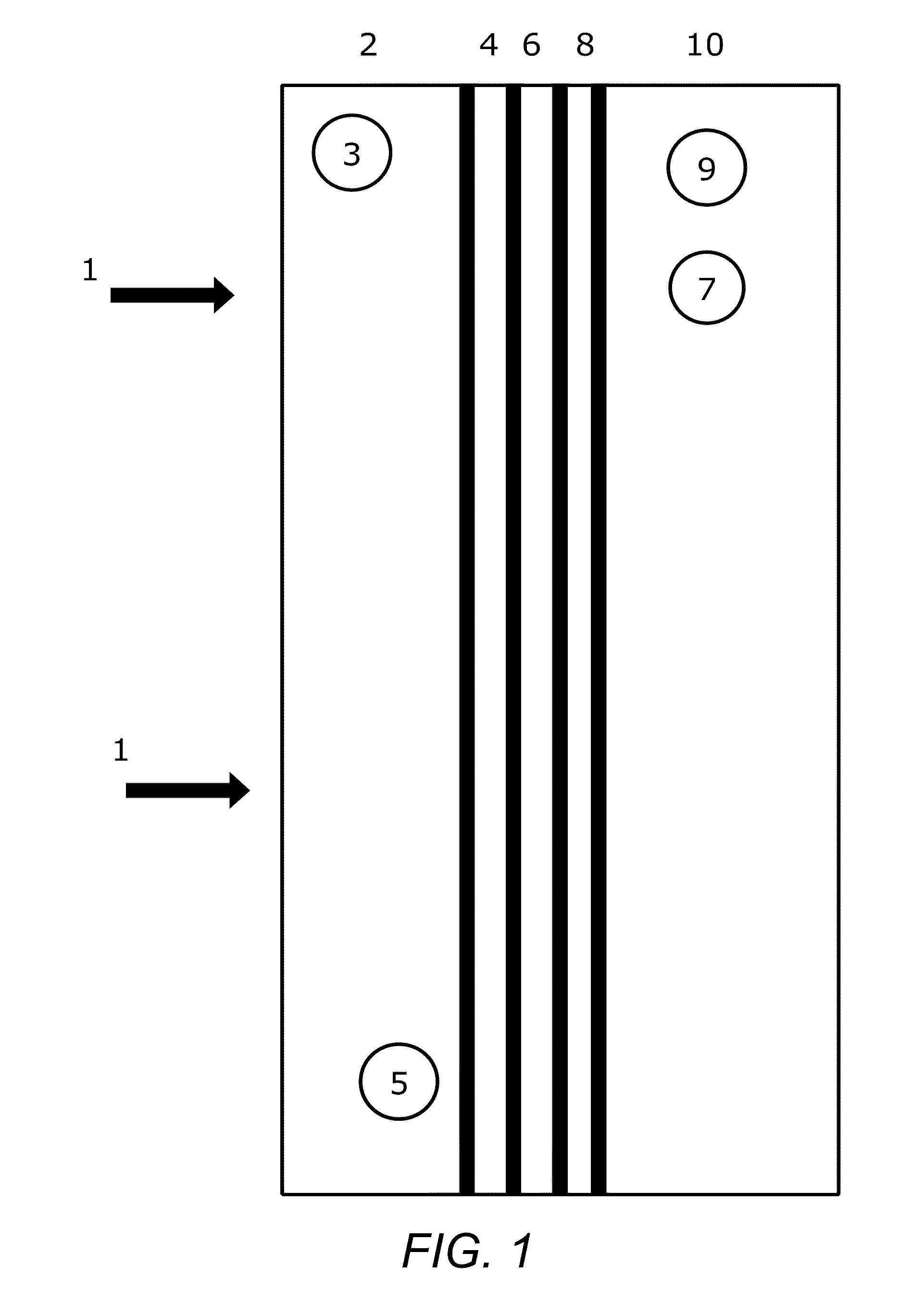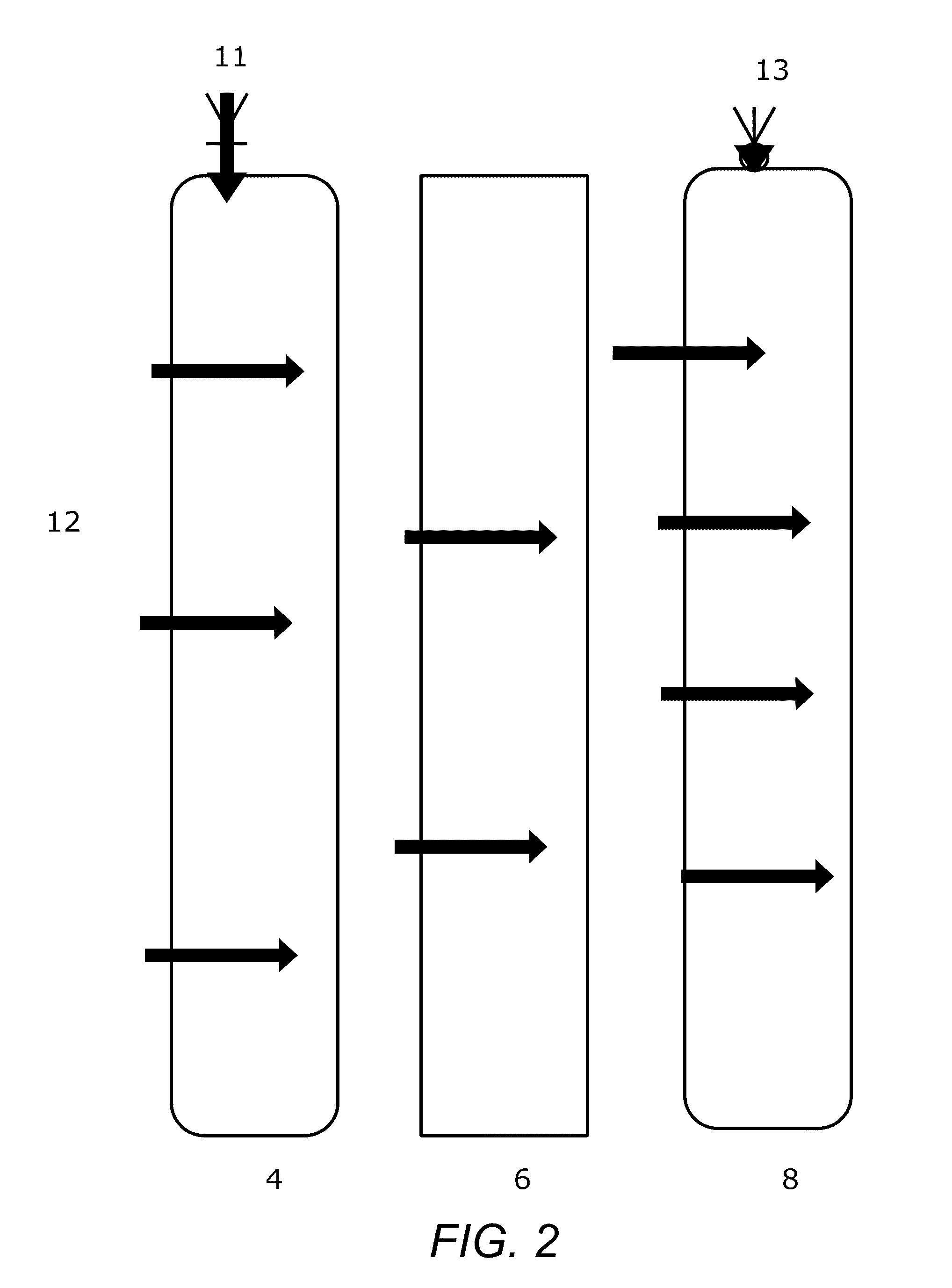Bio-Energy Reactor
a bio-energy reactor and reactor technology, applied in the field of gas production, can solve the problems of inability to prove viable, inability to produce hydrogen, and inability to discharge hydrogen, and achieve the effect of reducing heat buildup and flocculation, increasing gas production, and reducing the amount of was
- Summary
- Abstract
- Description
- Claims
- Application Information
AI Technical Summary
Benefits of technology
Problems solved by technology
Method used
Image
Examples
example
[0068]H2 / O2 production rate was measured when the reservoir was covered with a black cover to replicate an algae dark cycle, as follows:
Start Time: 10:00 AM Bio Type: Nanochloropsis salt water species
Dry Cell Voltage: 24.3 mv Ambient Temperature: 70.7 F Bio pH: 8.88
[0069]Bio ORP: −056 Wet Cell Starting Voltage: 23.3 mv & rising
Power Input: Volts: 3.7 Amps: 0.216 Duration: 30 seconds
Starting Voltage in Cell after Input: 0.848 mv
Dark Duration of Operation: 10 AM to 2 PM / 4 hours
Readings:
[0070]
10:00 AM (start): 68 MicromolesCell Voltage:.251 mv10:30 AM132 MicromolesCell Voltage:.179 mv11:00 AM132 MicromolesCell Voltage:.134 mv11:30 AM122 MicromolesCell Voltage:.134 mv12:00 PM112 MicromolesCell Voltage:.112 mv12:30 PM102 MicromolesCell Voltage:.090 mv 1:00 PM 84 MicromolesCell Voltage:.076 mv 1:30 PM 74 MicromolesCell Voltage:.071 mv 2:00 PM 68 MicromolesCell Voltage:.064 mvEnding Hydrogen 68 MicromolesEnding Cell Voltage:.064 mvMicromoles:
[0071]Test 3:
[0072]H2 / O2 production rate were me...
PUM
| Property | Measurement | Unit |
|---|---|---|
| cell voltage | aaaaa | aaaaa |
| length | aaaaa | aaaaa |
| energy | aaaaa | aaaaa |
Abstract
Description
Claims
Application Information
 Login to View More
Login to View More - R&D
- Intellectual Property
- Life Sciences
- Materials
- Tech Scout
- Unparalleled Data Quality
- Higher Quality Content
- 60% Fewer Hallucinations
Browse by: Latest US Patents, China's latest patents, Technical Efficacy Thesaurus, Application Domain, Technology Topic, Popular Technical Reports.
© 2025 PatSnap. All rights reserved.Legal|Privacy policy|Modern Slavery Act Transparency Statement|Sitemap|About US| Contact US: help@patsnap.com



